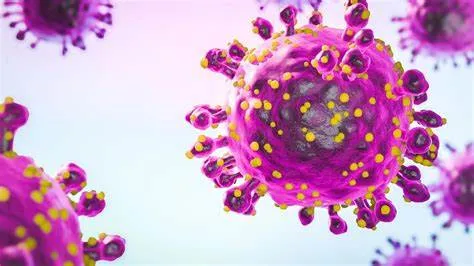In a rapidly evolving world where the global health landscape is constantly changing, the United Kingdom has taken a proactive step by drawing up a new disease-threat watch list. Published by the UK Health Security Agency (UKHSA), this list includes 24 infectious diseases that are considered to pose the greatest potential risk to public health in the future. The initiative aims to ensure that the country, along with the rest of the world, is better prepared for emerging infectious diseases, including those with pandemic potential, and to promote the development of vital vaccines, medicines, and diagnostics.
This proactive approach is particularly crucial in the wake of the COVID-19 pandemic, which took many health agencies by surprise and exposed gaps in preparedness. In an era of global interconnectedness, infectious diseases, especially those that can cross borders swiftly, present an increasing threat to both national and global health security.
The creation of the UK’s disease-threat watch list marks a significant shift in how we approach public health threats. As pandemics such as COVID-19 demonstrated, many new diseases emerge unexpectedly, often spreading faster than public health systems can respond. The current watch list has been created to identify diseases that may pose severe risks to public health, either because they have the potential for rapid spread or because they do not currently have effective treatments. By identifying these diseases early, the UKHSA hopes to focus attention on the most pressing threats and steer investments into preventive measures, treatments, and vaccines before these diseases can escalate.
Professor Isabel Oliver, the UKHSA’s Chief Scientific Officer, emphasized the importance of this watch list. While no disease on the list is ranked according to its immediate threat level, the list will be updated annually to ensure that new and emerging threats are adequately tracked and managed. The idea is not just to respond to the outbreak of a disease but to anticipate potential threats before they become global crises.
Diseases on the List: A Diverse Range of Threats
The watch list includes a range of diseases from both viral and bacterial origins, some of which are already known to be highly contagious or deadly, while others are emerging threats with the potential for future harm. Several of these diseases are linked to climate change, while others are related to evolving bacteria resistant to existing antibiotics. Here’s a closer look at some of the key diseases on the list:
-
Avian Influenza (Bird Flu) Avian influenza, or bird flu, is a viral infection that primarily affects birds but can sometimes jump to humans. The risk lies in the virus’s ability to evolve and become transmissible between humans, which could lead to a global pandemic. With increasing contact between humans and wildlife due to deforestation and urban sprawl, the risk of bird flu spreading to humans is higher than ever before.
-
Measles-Like Viruses A novel measles-like virus is also on the list, as viruses within the Paramyxoviridae family pose a high risk. A novel virus of this type would likely spread quickly, making it impossible to control with the strictest lockdown measures, and could be even more deadly than COVID-19. This is particularly concerning because measles-related diseases are typically more dangerous to children, making them a critical area of focus.
-
Mosquito-Borne Illnesses The UKHSA is closely monitoring the growing threat of mosquito-borne diseases, which are expected to become more prevalent as the planet continues to warm due to climate change. Diseases like Dengue, Zika, and Chikungunya are already spreading in tropical and subtropical regions, and as the climate shifts, these diseases could begin affecting new regions, including parts of Europe and the UK.
-
Zoonotic Diseases Many of the diseases on the list, such as Nipah virus and Rift Valley fever, are zoonotic, meaning they are primarily carried by animals but can be transmitted to humans. As humans increasingly encroach on wildlife habitats, the risk of zoonotic diseases spilling over into human populations grows. These diseases often have high mortality rates and can spread rapidly within human populations, as seen in past outbreaks of Ebola and other hemorrhagic fevers.
-
Antibiotic-Resistant Bacteria Some of the bacterial infections on the list, such as gonorrhoea and E. coli, are becoming resistant to existing antibiotics. The growing issue of antimicrobial resistance (AMR) is a global health crisis that has been exacerbated by overuse and misuse of antibiotics. If new antibiotics or treatments are not developed, these infections could become much harder to treat, leading to higher rates of morbidity and mortality.
-
Ebola and Similar Viruses Ebola, Lassa fever, and Marburg virus are among the high-risk viral hemorrhagic fevers on the list. These diseases are deadly and can spread rapidly in healthcare settings, making containment difficult. The recent outbreaks in West Africa have highlighted the importance of surveillance and early intervention to prevent these diseases from becoming global threats.
-
Influenza Non-seasonal influenza, including strains of avian flu, continues to pose a threat due to its ability to mutate rapidly. A new strain could cause widespread illness if the population has little immunity to it. As with previous pandemics like the 1918 Spanish flu, influenza viruses have the potential to spread across the globe and cause significant harm.
The Importance of Early Detection and Preparedness
The new watch list reflects a growing recognition of the need for early detection and better preparedness to handle emerging infectious diseases. These diseases often spread rapidly, especially in a world with global travel and interconnected economies. A key focus of the UKHSA’s initiative is to ensure that researchers and the pharmaceutical industry are actively working on diagnostics, treatments, and vaccines for these emerging threats.
The list is not just a warning to the UK but also to the global community, which must collaborate on surveillance and response strategies. Diseases like Anthrax, Plague, and Q fever, which have long been associated with specific regions, could now spread to areas that previously did not face such risks. Global travel, climate change, and environmental destruction are all contributing factors to the changing landscape of infectious disease threats.
Professor Mark Woolhouse, director of the University of Edinburgh’s “Tackling Infections to Benefit Africa” program, pointed out that the COVID-19 pandemic had exposed the limitations of preparedness efforts based on outdated models. The UKHSA’s prioritization of potential pandemic threats is part of a global initiative to ensure that experts are better prepared for a wider variety of infectious disease threats.
Global Collaboration and Research
The UKHSA’s watch list is not an isolated effort; it is part of a broader, global effort to identify, track, and respond to emerging infectious diseases. International collaboration between public health authorities, scientists, and health organizations is critical in the fight against global health threats. Diseases like Oropouche virus and Crimean-Congo haemorrhagic fever, which have been largely confined to specific regions, are now on the radar due to the potential for expansion, particularly in light of climate change and increasing human-wildlife contact.
Through improved surveillance and better understanding of pathogen diversity, countries can begin preparing for diseases that may not yet be widely known but have the potential to cause significant harm. The global scientific community’s ability to collaborate and share data on emerging infectious diseases is essential to preventing pandemics.
The UK’s new disease-threat watch list serves as an important reminder of the ever-evolving nature of global health risks. The ongoing changes in the environment, the rise in global travel, and the continued evolution of pathogens all make it imperative to stay vigilant and proactive. By identifying and prioritizing diseases that may pose a threat to public health in the future, governments, healthcare providers, and research institutions can better prepare for the unknown.
However, the development of new diagnostics, treatments, and vaccines is not just about responding to a future crisis; it’s about safeguarding the health of populations now and in the years to come. The work being done by agencies like the UKHSA, along with global health organizations, will play a crucial role in shaping how we respond to the infectious diseases of tomorrow. As we continue to face new health challenges, investment in research and international cooperation will be key to ensuring that we can mitigate the impact of emerging threats and protect public health worldwide.










